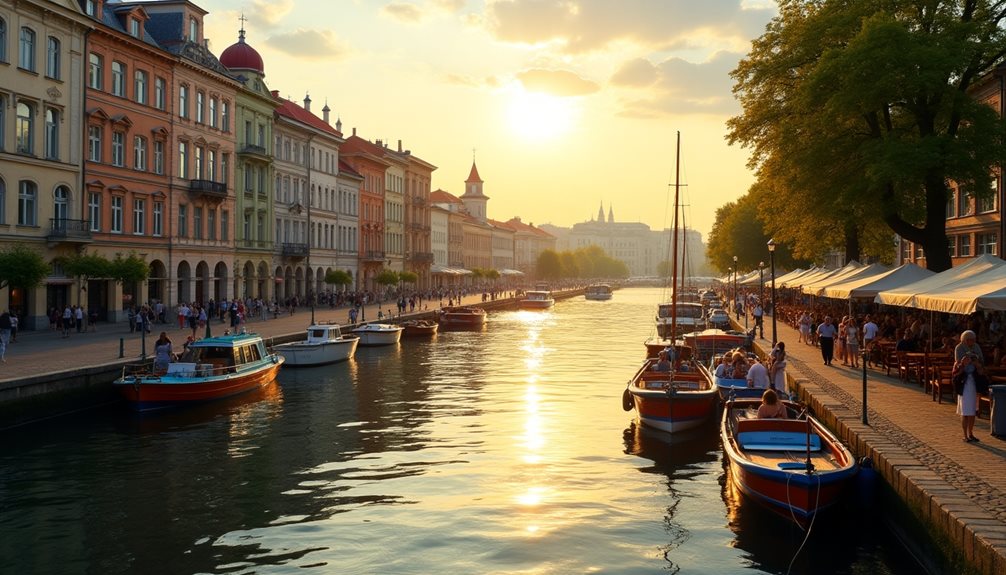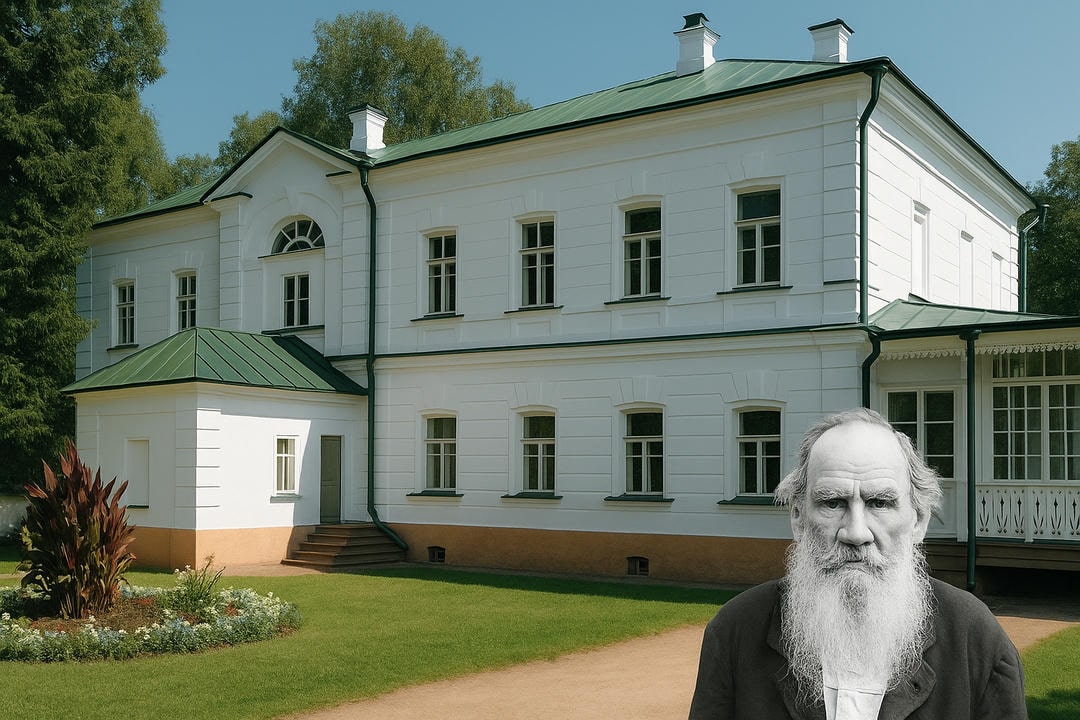Matryoshka Dolls
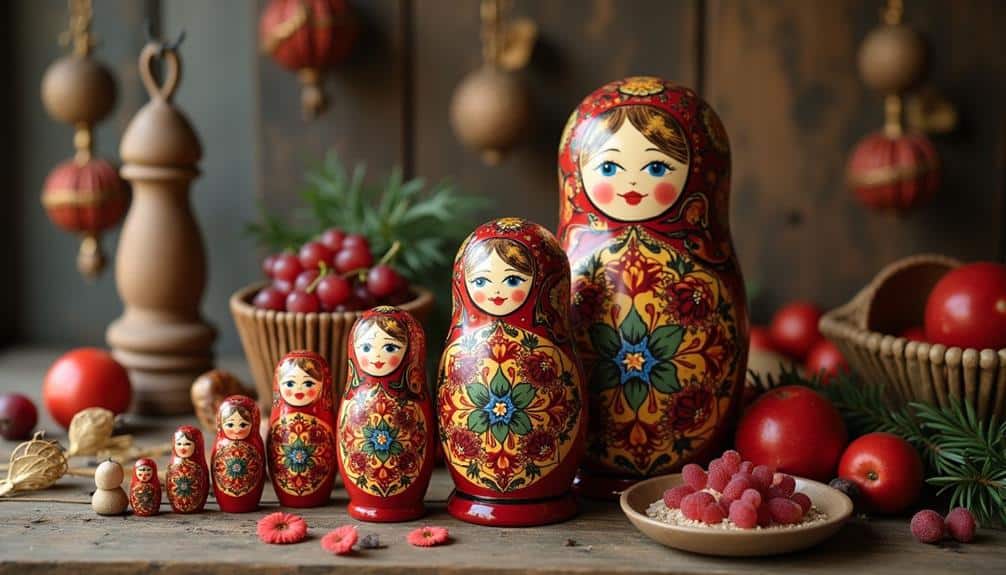
Among the many traditional crafts of Russia, Matryoshka dolls stand out as a distinctive symbol of Russian culture and artistry. These nested wooden dolls, painted in vibrant colors, represent much more than just a decorative item. They embody the layered history significance and cultural symbolism deeply rooted in Russian heritage.
When you explore the history of Matryoshka dolls, you’ll discover they first appeared in the late 19th century. Inspired by similar nesting dolls from Japan, Russian craftsmen added their unique twist, creating a craft that quickly became synonymous with Russian folk art. Each Matryoshka set tells a story, often depicting themes from rural life, fairy tales, or family generations.
The cultural symbolism of Matryoshka dolls goes beyond their aesthetic appeal. They symbolize unity, continuity, and the connection between generations.
When you hold a Matryoshka, you’re not just holding a piece of art; you’re embracing a concept that values the freedom to explore one’s roots and the interconnectedness of all life stages.
Vologda Lace
While Matryoshka dolls capture the imagination with their colorful layers, Vologda lace mesmerizes with its intricate patterns and delicate craftsmanship.
You’ll find that Vologda lace, originating from the Vologda region in Russia, has a rich history that dates back centuries. This lace isn’t just a craft; it’s an art form that’s been passed down through generations, symbolizing the spirit of freedom and creativity.
When you explore the Vologda history, you’ll see how the lace evolved, becoming a symbol of Russian culture. The techniques used in Vologda lace-making, such as bobbin lace, require meticulous attention to detail and an incredible amount of patience.
Each thread is carefully woven to create stunning, intricate designs that seem almost magical.
The beauty of Vologda lace lies in its complexity and the skill required to produce it. Lace-makers use traditional patterns that have been perfected over time, ensuring that every piece is unique.
If you’ve got a passion for crafts that embody freedom and artistry, you’ll be captivated by the elegance and sophistication of Vologda lace. Immerse yourself in this beautiful tradition and let it inspire your creative spirit.
Palekh Miniatures
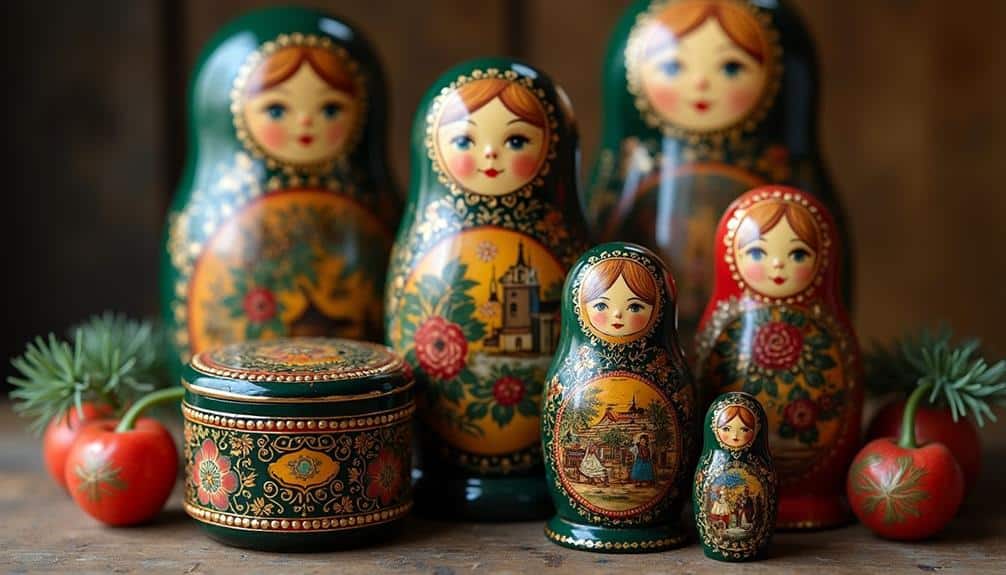
Palekh miniatures, with their vivid colors and intricate details, are another gem of Russian craftsmanship. Imagine holding a small, lacquered box that tells an entire story through its delicate brushstrokes.
Palekh has a rich history, originating in a village known for icon painting. After the 1917 Revolution, Palekh artists shifted to creating these enchanting miniatures, keeping their craft alive.
You’ll notice the unique Palekh techniques used to achieve such finesse. Artists apply layers of tempera paint on a black lacquer background, giving the miniatures their signature glow. The colorfulness of Palekh pieces is mesmerizing, as artists use a vibrant palette to bring scenes to life.
Palekh themes often draw from folklore, fairy tales, and Russian literature. The symbolism woven into each piece is profound, with mythical creatures, heroic figures, and intricate floral patterns all playing their part.
The skill of Palekh artists is truly awe-inspiring; each brushstroke is deliberate, each detail meticulously planned.
Embrace the freedom to explore this art form’s rich heritage and symbolism. Palekh miniatures aren’t just beautiful objects—they’re windows into a world of Russian cultural tradition and storytelling.
Khokhloma Painting
Khokhloma painting, a vibrant and time-honored Russian folk art, captivates with its dazzling floral patterns and rich, metallic hues. You’ll find this art form’s history significance rooted in the 17th century, originating from the village of Khokhloma. It’s a demonstration of the resilience and creativity of Russian artisans who transformed everyday wooden objects into stunning masterpieces.
You can’t help but marvel at the painting techniques used in Khokhloma. Artisans start with wooden items, priming them with a mixture of clay, raw linseed oil, and aluminum powder to create a distinctive metallic sheen.
Then, they apply intricate designs featuring flowers, berries, and leaves, usually in red, black, and gold. This combination of colors and motifs symbolizes the lush beauty of Russia’s natural landscape.
The final touch involves a meticulous process of drying and baking the painted objects in a kiln, which guarantees durability and adds a glossy finish. These techniques have been passed down through generations, preserving the authenticity and uniqueness of Khokhloma painting.
Embrace the freedom to explore this traditional craft and you’ll deepen your appreciation for Russia’s rich cultural heritage.
Gzhel Ceramics
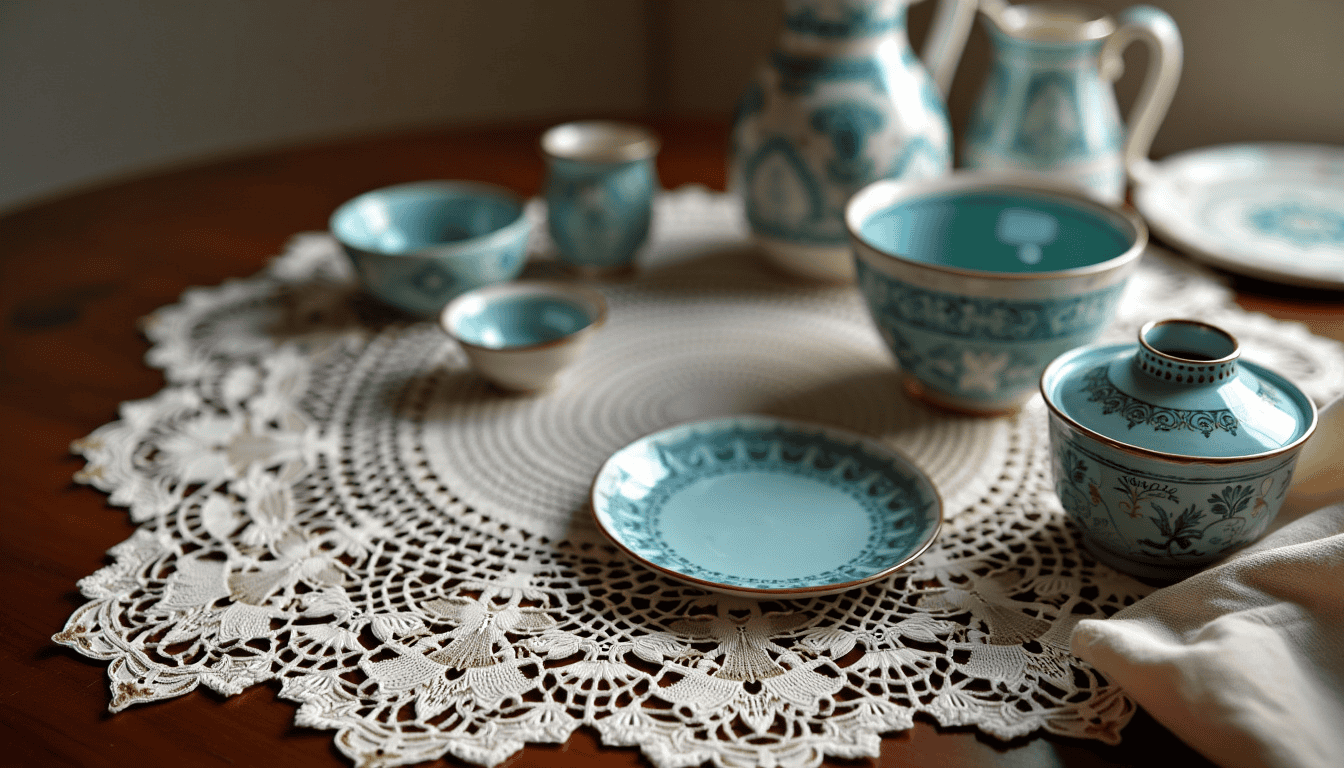
Gzhel ceramics, with their distinctive blue and white patterns, stand as a confirmation to Russia’s rich artistic tradition. As you immerse yourself in Gzhel history, you’ll discover that this craft dates back to the 14th century, originating from the Gzhel region near Moscow. It’s a vibrant reflection of artistic freedom and creative expression.
You can’t help but be enthralled by Gzhel colors—primarily cobalt blue on a white background. These hues are applied using unique Gzhel techniques that require skill and precision. Gzhel artists are true masters, often apprenticing for years to perfect their craft. Each piece is meticulously hand-painted, showcasing intricate Gzhel patterns that range from floral motifs to elaborate scenes.
Exploring Gzhel markets, you’ll find an array of ceramics, from delicate teapots to robust vases. These markets are a haven for those who cherish individuality and the freedom to own something unique.
When you hold a piece of Gzhel, you’re not just holding a ceramic; you’re embracing centuries of tradition, artistry, and the spirit of Russian craftsmanship. So, let your curiosity guide you to discover the enthralling world of Gzhel ceramics.



